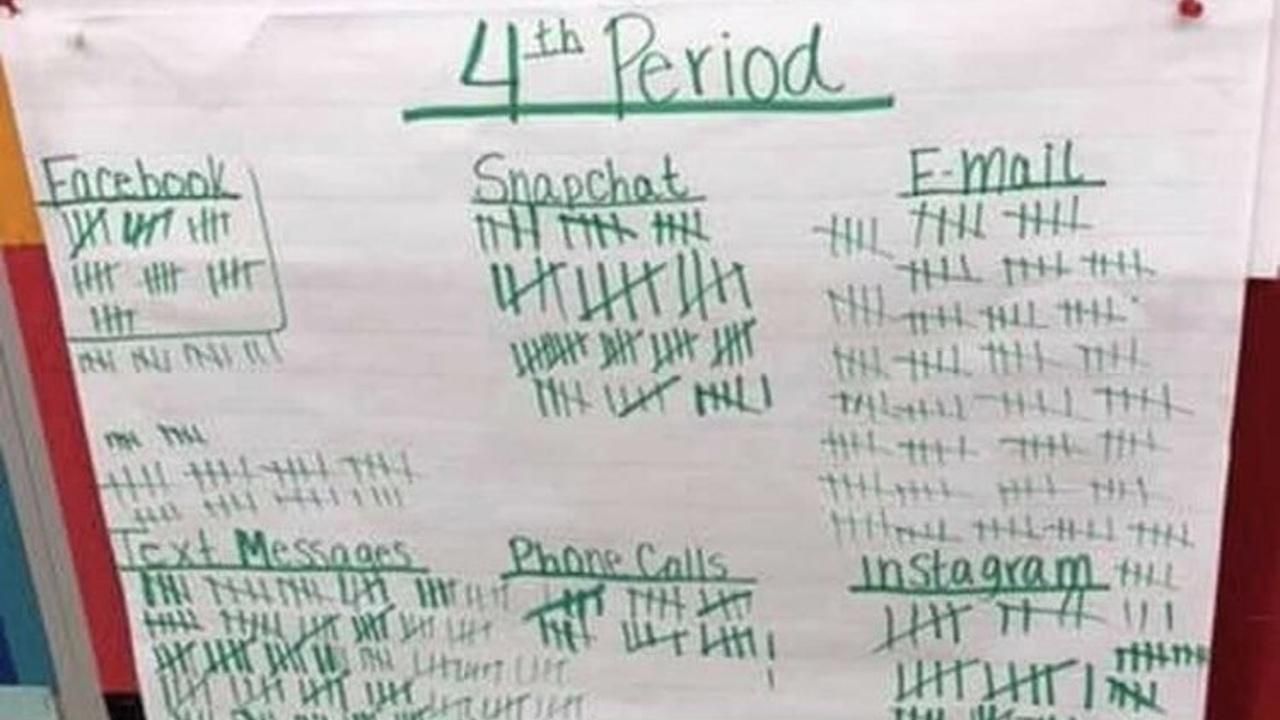In an experiment, one teacher had her fourth period class take their phones, turn up their notification volume to the maximum they could and then log how many notifications would come during that day’s lessons.
She started off drawing out a box specifically for Facebook, but after the 35th hashmark, her marker began to break all semblance of a border. By the end of the class and by our count, Facebook put out 108 pings. Emails pulled past 150. Instagram closed in on 200 and went further. There was a combined section for GroupMe and Discord. But by far, the app that stole the crown was none other than the humble text messenger at more than 350 instances.
Screen-grabbed from Facebook: a teacher had her students turn their phone volume up and create a collective record of the notifications they received in a single class period. pic.twitter.com/qNhKYMMFAg
— katie rosman (@katierosman) March 6, 2019
To be fair to Miner, who may have become modern society’s greatest supervillain in his own mind, the text message epidemic long predates the advent of Android and the iPhone. Kids texted their way throughout class with T9 keyboards, slide-out QWERTYs and took calls secretly by recording a high-pitched ringtone that originally used by 7-Eleven store owners to prevent teenagers from loitering in front of their outlets for half the afternoon. That has always been and might always be a problem.
What’s wrong from there are all the other added distractions that now feature rich, interactive multimedia that seem to value real-time responses more than anything else. And they’re growing in numbers and in compelling power by the day.
Some believe the answer to this, at least in school, is to impose a ban on the use of phones — though kids from throughout the generations know that if they want to break the rules, they’ll find a way to do so.
What we do as a society to help guide children through their digital life and how they manage their priorities? Well, we’ve got a long way to go.

